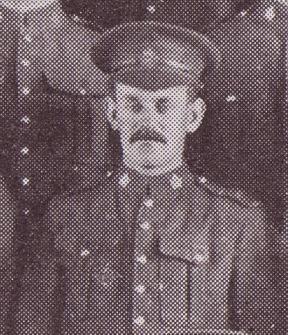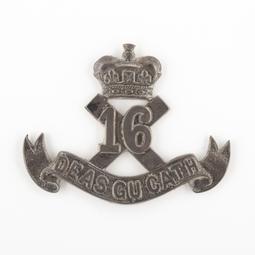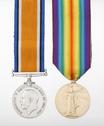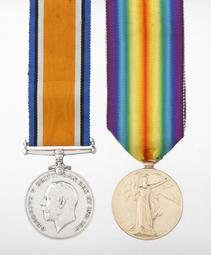Unit
16th Canadian Infantry Battalion (Canadian Scottish)
Branch
Infantry
Service Component
Canadian Expeditionary Force
Service Number
700069
birth
1886/08/01
Blawith, Lancashire, United Kingdom, England
death
1968/08/17
Winnipeg, Manitoba, Canada
grave
Chapel Lawn Memorial Gardens, Winnipeg
Gender
Male
James Henry Allonby was born on 1 August 1886 in Blawith, Lancashire, United Kingdom, and emigrated to Canada in 1911. When he joined the Canadian Expeditionary Force (CEF) he was married to Elizabeth Allonby, also of England, and had two young children. He was a farmer, giving his address as Ericksdale, Manitoba, and enlisted in Winnipeg on 6 December 1915 with the 101st Canadian Infantry Battalion (Winnipeg Rifles).
He left for England on 28 June 1916 on the SS Olympic and upon arrival, 6 July, was assigned to the 17th Canadian Infantry Battalion (Nova Scotia Highlanders) for training shortly thereafter. Upon completion of his combat training he was sent to France, on 28 August 1916, to join his combat unit, the 16th Canadian Infantry Battalion (Canadian Scottish). He was hospitalized in September with a bout of measles. The Canadian Corps was committed for the first time as a unit in support of the British Reserve Army in the Courcelette phase of the Battle of the Somme on 15 Sep 1916. By the end of that day they had largely reached their objectives in an action that saw the first use of tanks. Most of the Canadian fighting involved the 2nd and 3rd Canadian Divisions but by 5 October, the 16th Battalion (part of the 1st Canadian Division) had been moved to Albert, just west of the British starting lines, for the Somme offensive. The next day the battalion’s officers reconnoitered the trenches in the recently captured Courcelette area in preparation for further offensive operations. On the morning of the 8th October, the 16th Battalion, in conjunction with the 13th and 3rd Battalions, attacked in the area north east of Courcelette, reaching their objectives later that day. The attack appears to have been a costly one as the battalion diary notes that all but two of their officers were killed or wounded. Later that day the Germans counter attacked and, while the 16th held their positions, both of their flanks were exposed and they were forced to withdraw. They were relieved by the 1st Battalion on the 9th of October and returned to Albert.
Private Allonby was received at the 3rd Echelon British Expeditionary Force hospital on 13 October with a gunshot wound to the abdomen. From here he was returned to England for further treatment. He largely recovered and was discharged from the Canadian Casualty Assembly Centre in May 1917 for duties in the United Kingdom. His medical category was eventually assigned as B.1 which meant that he was fit for duties in the rear areas of a combat theatre. Consequently, he returned to France in the fall of 1917 and by 17 November he was assigned to the 4th Canadian Labour Battalion (later renamed the 2nd Canadian Infantry Works Battalion). He was granted his first Good Conduct Stripe in February 1918 (back dated to the 2nd anniversary of his joining the army with no conduct record) which entitled him to a pay raise of 10 cents per day. He also got 3 weeks leave that month – a relatively uncommon event for enlisted men. By January 1919 he had returned to United Kingdom in preparation for demobilization where he suffered an apparently mild bout of influenza. On 24 March he shipped out to Canada where he demobilized 9 April 1919.
He returned to Winnipeg and by 1921 he his living at 610 Banning Street with his wife and two children, and a six-year-old nephew. At this time he had found new employment as a locomotive engineer. He died in 1968 and is buried at the Chapel Lawn Memorial Gardens in Winnipeg.




